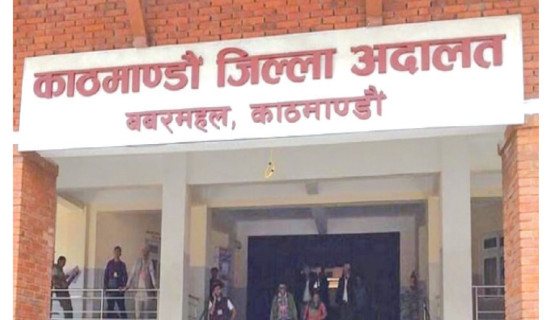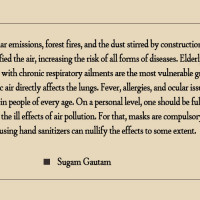- Thursday, 3 April 2025
Water crisis increases in Dhanusha
By Vijay Kumar Sah,Dalkebar, Apr. 2: Residents of Mithila Municipality-2, Dhanusha, are grappling with a severe water crisis after two of the three wells in the area dried up.
Local Haridev Mahato said that the settlement is facing this crisis due to the depletion of water sources. With only one functional well remaining, over 150 households are now dependent on it for water.
According to Mahato, well-off families had installed motors in the wells to extract water, while others used buckets and ropes. However, with the wells drying up, the entire settlement is struggling. He also said that the two wells dried up by the second week of March.
Despite the local government installing a deep tube well a few months ago, it has yet to be operational. The installation of an electric transformer, motor and pipeline extension are still pending. "We have been urging the ward chairperson and other concerned authorities to expedite the process,” Mahato added.
With the onset of the dry season, water sources are not just depleting in the squatter settlement but also across the northern region of Dhanusha district. Residents of Bateshwar, Mithila, Dhanushadham and Ganeshman Charnath municipalities are experiencing a severe drinking water crisis as rivers, streams, springs, wells and hand pumps dry up. In addition to the drinking water shortage, farmers are struggling due to a lack of irrigation.
Manoj Kumar Mahato, a resident of Hariharpur in Mithila Municipality-3, shared that he has had to abandon his vegetable farming plans due to dried-up wells. “We depend on seasonal vegetable and crop production for income. We dug wells for irrigation, but now there is no water in them. Farming is impossible without irrigation and we cannot rely on rainwater,” he explained. More than 30 per cent of water sources have already dried up, he informed.
In recent years, excessive extraction of riverbed materials from the Ratu, Badahari, Aurahi, Jalad and Kamala rivers has worsened the situation. Local believed that the overexploitation of Chure hills and deforestation have led to the depletion of water sources.
Suresh Sharma, a forest officer from the Madhes Province Forest Directorate, said that the lack of winter rainfall has significantly contributed to the water crisis. “There has been no rainfall since October. Normally, we get one or two rain showers between November and December, but this time, the absence of rain has caused groundwater levels to drop further," he said.
He further said that the uncontrolled extraction of riverbed materials has prevented the land from absorbing and retaining water. “We have been reckless in managing and conserving natural resources. If we do not control river exploitation, protect the Chure region and conserve watersheds, the water crisis will become even more severe,” he warned.
Chure expert Dr. Vijay Kumar Singh Danuwar said that the continuous decline in groundwater levels is the primary cause of the crisis. “Naturally, the Chure region serves as a water reservoir. If embankments are built in the Chure area to retain monsoon water, groundwater levels could improve,” he suggested.
He also said that the solution lies in water source conservation, preventing deforestation, controlling unchecked extraction and harvesting rainwater. “If we fail to take necessary measures, not just Dhanusha but the entire Tarai region will face a deepening water crisis. Within the next eight to ten years, the entire region may suffer from extreme water scarcity,” Dr. Danuwar cautioned.














